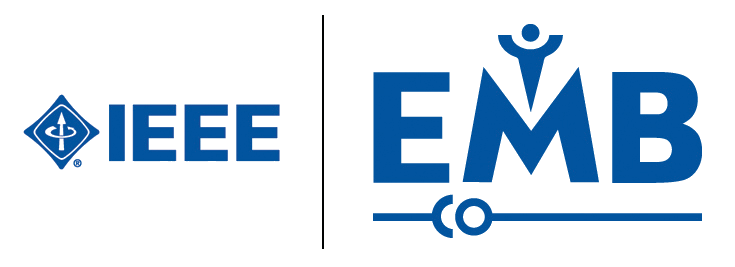

 43rd Annual International Conference of the
43rd Annual International Conference of theIEEE Engineering in Medicine and Biology Society October 30 - November 5, 2021, Virtual Conference


 43rd Annual International Conference of the
43rd Annual International Conference of theIEEE Engineering in Medicine and Biology Society October 30 - November 5, 2021, Virtual Conference |
Technical Program for Friday November 5, 2021 |
Click on To show or hide the keywords and abstract (text summary) of a paper (if available), click on the paper title Open all abstracts Close all abstracts |
| FrAT7 | LIVE |
| Mini Symposium: Recent Advances on Cuff-Less Blood Pressure Measurement I &
II Organizers: Ramakrishna Mukkamala & Josep Sola |
Mini-symposium |
| 07:30-09:00, Paper FrAT7.1 | |
| Mukkamala, Ramakrishna | University of Pittsburgh |
| Sola, Josep | Aktiia SA |
| 07:30-09:00, Paper FrAT7.2 | |
| Sola, Josep | Aktiia SA |
| Mukkamala, Ramakrishna | University of Pittsburgh |
| FrAT5 | LIVE |
| Special Session: Innovation Oriented Biomedical Engineering — Curriculum
Discussion and Workshop with Students and Educators Organizer: Michael Friebe |
Special Session |
| 07:30-09:00, Paper FrAT5.1 | |
| Friebe, Michael | Otto-Von-Guericke-University |
| Wendler, Thomas | SurgicEye GmbH |
| Appaji, Abhishek | BMSCE, Begaluru |
| Wheeler, Bruce | University of Florida |
| FrK2N | LIVE |
| Plenary Speaker James Moore Jr., Imperial College London | Plenary Session |
| FrBT7 | LIVE |
| Mini Symposium: Upper and Lower Extremity Rehabilitation Robotics: Current
Trends and Future Directions Organzier: Karen J. Nolan |
Mini-symposium |
| 11:30-13:00, Paper FrBT7.1 | |
| Nolan, Karen J. | Kessler Foundation |
| Karunakaran, Kiran | NJIT, Kessler Foundation |
| Forrest, Gail F | Kessler Foundation |
| Zanotto, Damiano | Columbia University |
| Adamovich, Sergei | New Jersey Institute of Technology |
| Saleh, Soha | Kessler Foundation |
| FrDT7 | LIVE |
| Mini Symposium: New Diagnostic Tools and Algorithms for COVID-19 Organizer:
Richard Ribon Fletcher |
Mini-symposium |
| 15:00-16:30, Paper FrDT7.1 | |
| Nicolaou, Savvakis | University of British Columbia |
| Elgendi, Mohamed | University of British Columbia |
| Smith, David | LSU Health New Orleans |
| Howard, Newton | University of Oxford |
| Fletcher, Richard Ribon | Massachusetts Institute of Technology |
| FrDT5 | LIVE |
| Organizing Committee Appreciation | Social Session |
| FrK3N | LIVE |
| Plenary Speaker Michael Miller, Johns Hopkins | Plenary Session |